L’Affaire Stavisky
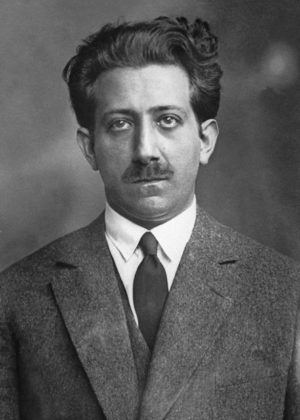 How Jewish swindlers — whose techniques seem quite familiar today — set the stage for the collapse of France
How Jewish swindlers — whose techniques seem quite familiar today — set the stage for the collapse of France
HOW MUCH damage does minority racism do as it encourages the Majority to keep its mouselike feet on the treadmill; fork over a disproportionate share of taxes; or battle in the overseas wars? No foundation endowed research group has yet investigated this question. The query is particularly relevant in a public relations culture like that of the United States, upon whose power Western civilization depends, and through whose living rooms streams an incessant, endless torrent of minority propaganda, encouraged by Majority mindlessness. Such an outpouring has never been witnessed on a similar scale in history. Graphically, audibly, tirelessly, daily, at all hours, the minority racist makes his appearance, alternately complaining, accusing, plotting, sleuthing, whining, gloating, demanding, inserting and twisting his ideological dagger, as he attacks the Majority in a thousand different ways. (ILLUSTRATION: Serge Alexandre “Sacha” Stavisky)
What effect does such a Niagara of sustained, hyperthyroid sophistry and palpable razzmatazz have on a population group which is relied upon to defend the political viewpoint that makes such a spectacle possible? Perhaps a brief review of the events leading up to the ridiculously easy overthrow of “democratic” France in 1940 will provide some useful information.
In the decade prior to 1939, the year that France declared war on National Socialist Germany, the French publicity media, consisting largely of eight and twelve-page newspapers, reflected a customary and historical indifference to the country’s political well-being. Everyone wanted a reduction in unemployment, but no government ever tried to eliminate it or effectively to reduce it. Grasping, money-hungry politicians, lacking any nationalist drive, seemed to acquire virtually all key government positions. None ever displayed any inspirational leadership qualities or organizational talent of the de Gaulle type, but all labored hard at infusing themselves with charisma. Nonetheless, the patient French citizenry plugged onward, working diligently, paying its taxes, serving in the army, and trying to save a little money. But a pervading malaise had spread through France, beginning in the fateful year of 1933, when Adolf Hitler assumed leadership of the German state. This was the general atmosphere in which an unending series of financial scandals, usually with heavy minority overtones, fell upon the hapless Third Republic.
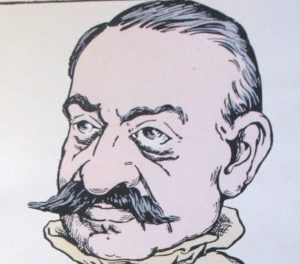
The media repeatedly reported cabinet ministers and deputies enmeshed in shady deals with swindlers. Corruption seemed to become an integral part of every French administration. The turpitude of both press and government came to be accepted as chronic. The dual causes celebres of Louis L. Klotz and Marthe Hanau did not help things. The former, Clemenceau’s Minister of Justice, had been seized by the gendarmes for passing rubber checks. Madame Hanau had made the headlines through her associations with dishonest politicians and peculations amounting to millions of francs. Her swindles had involved the cooperation of cabinet ministers, deputies, senators and the Foreign Office. Her money was used to pervert the press in general and even to buy one newspaper, which was then employed to lure tens of thousands of dupes to hand over their savings to her “enterprises.” How could the average Frenchman suspect anything when the Premier, the Foreign Minister, the Minister of Education, and the Cardinal Archbishop of Paris eagerly assisted her? The Hanau scandals dragged on for seven years, as the Madame ducked in and out of jail and her convictions were mysteriously and continuously delayed.
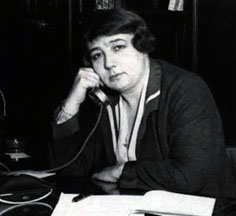
Then there was Monsieur Oustric, also a corrupter of high-level Parisian politicians, a shady banker who specialized in high-grading penny stocks. When the Oustric octopus disintegrated, and the sheep had been sheared, the Minister of Justice harrumphed and blandly blocked any inquiry, ably aided by the French Ambassador to Rome. Both later proved to be in Oustric’s pocket. These shabby deals were accompanied by smaller scandals too numerous to mention. Frenchmen, dedicated to liberty, equality and fraternity as they might be, began to wonder if rioting and mayhem might help. Peaceful demonstrations by the mulcted gulls seemed to avail nothing.
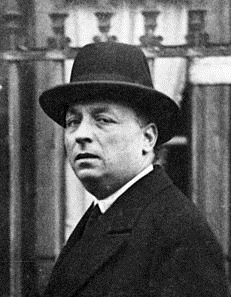
The climax, however, was yet to come. Against this background of rascally politicians and financial con men appeared in 1934 a master minority mountebank and charlatan above and beyond the standard model, holding the most starched, most dignified and most highly placed circles on his leash. This was Serge Alexandre (“Sacha”) Stavisky. A furtive network of suborned officials and compromised financiers, extending throughout the foci of French monetary power, had been initially and somewhat anonymously revealed by a raid on a Bayonne pawnshop that was floating fraudulent bonds. This small police action had the effect of disturbing an enormous antheap. Emerging into the light, blinking, came Stavisky, the king ant. As his multitudinous, political connections were blared forth in the French press, the stodgy population began to vibrate with rage. Stavisky had been born in Kiev, Russia, of Jewish parents, and was brought to Paris at the turn of the century. Over a long career of confidence games, forgery, pandering, scalping and smuggling, alternated with run-ofthe-mill stealing, he gradually rose to the ownership of a prominent newspaper and, accompanied by dazzling midinettes, became the darling of the haute monde. Slowly but surely he added one politician after the other to his string, not excluding the Sûreté General, the French secret police.
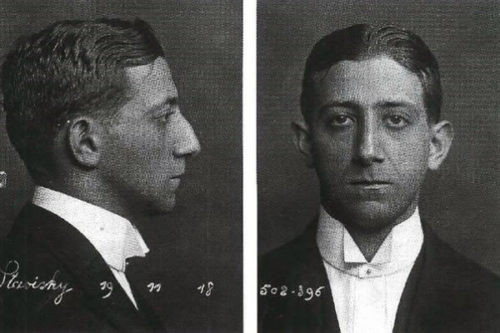
Stavisky published two newspapers, one feeding its readers the liberal line, the other conservatism. Forty-five complaints of swindling were leveled at him, forty-five times they were ignored. One of his trials was postponed nineteen times. During the postponements, Stavisky’s fraudulent enterprises garnered many more millions, a favorite ploy being the continued issuance of municipal bonds, which were secured by either stolen or fake jewels. He would then discount the bonds at a legitimate bank, the proceeds being used to found another Stavisky corporation. In 1933 a confederate grabbed by the police confessed that Stavisky’s bunco network had made off with 239,000,000 francs’ worth of bonds from Bayonne alone. Stavisky’s newspapers, apparently at ideological loggerheads, were not so in reality. The authentic ideology was the acquisition of both leftist and rightist suckers for the furtherance of Stavisky’s “projects.” Presently the Minister of the Colonies himself was unveiled as one of Sacha’s minions in the financial rape of insurance companies. George Bonnet’s name (he was the proper, conservative Minister of Finance) popped up when his aide turned out to be a Stavisky collaborator.
As the scandals reached new highs of infamy, and as the French public was subjected to new evidence of the widespread nature of Stavisky’s machinations, he mysteriously vanished. Simultaneously it was discovered that the Sûreté General had secretly furnished him with a spurious passport, obviously hoping he would flee abroad. At this juncture the French government appeared to be coming apart. Panic seized various departments. The French national police, unable to arrest Stavisky, and having failed to spirit him out of the country, had apparently cornered him in his house. Mentally baffled, the Sûreté began smashing about somewhat in the manner of a frustrated gorilla ordered by a research team of psychiatrists to make stacks of little blocks. The police plaintively announced that at the very moment they were breaking down Stavisky’s door, he committed suicide! No one who had not been committed to an insane asylum ever believed that story.
At the cracking point, the French people gathered in cynical, angry throngs in the Paris streets — and started to rampage. On one night after another in January 1934, destructive, cursing mobs assaulted the Palais Bourbon and struggled, by the thousands with police. Fascist and Communist groups were embarrassed to find themselves battling side by side in a common purpose. In the midst of the rioting, the news came of another big minority scandal. The Minister of Justice was involved in the Sacazan bankruptcy swindle. To further inflame the citizenry, several Paris newspapers falsely reported that another minority, in this case, Senegalese Negro troops, were about to be marched in to “mow down” the demonstrators.
One particular mob, of unusual determination and numbering 10,000, made twenty crazed assaults on a bridge over the Seine, with a loss of six dead. On February 6, 1934, a furious Parisian crowd of remarkably large dimensions, estimated at over 40,000, headed for the ministries in an apocalyptic rumble. This time sixteen rioters were killed and 655 injured. Then, as a finishing touch a minority magistrate, Dr. Albert Prince, who had been active in keeping Stavisky out of jail, was first drugged, then tied to a railway track and then horribly maimed and killed by four passing trains. State investigators with straight faces adjudged the act a suicide.
These events transpired while National Socialist Germany was arming next door to France on a round-the-clock schedule. As an aftermath of the disorders, some members of the military hierarchy began to talk openly of getting rid of the Republic. French voters, however, mistakenly thought they had a solution. Moving starkly forward as a one-man national rescue team strode the leader of the Socialist party, Leon Blum. In July 1934, Blum signed a “pact” between his Socialist party and the Communists calling for a “Popular Front” against French Fascism, although some observers wondered just what the Fascists had to do with the government corruption. In April 1936, after two more years of intensive German rearmament on the other side of the Rhine, Blum was the victim of a racial assault by disgruntled French rightists, who beat and kicked him ferociously after dragging him from his limousine. In May 1936, the Popular Front’s election victory swept Blum into power as premier. By way of celebration, union leaders called a series of paralyzing strikes throughout France, beginning at aircraft factories and moving into the automobile industries.
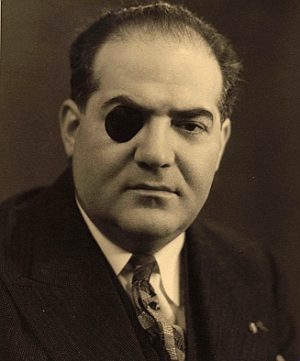
On the joyous occasion of opening the first session of the new Chamber, Leon Blum found himself confronted with the worst wave of anti-Jewish feeling in France since the Dreyfus Affair. The rightist Xavier Vallat taunted the new premier mercilessly in the Chamber of Deputies:
XAVIER VALLAT: Your arrival in office . . . is incontestably a historic date. For the first time this ancient Gallic-Roman Country will be governed …
HERRIOT (the Speaker): Be careful what you say, M. Vallat!
XAVIER VALLAT: By a Jew. I have to say aloud what everyone is thinking silently — that to govern this peasant nation which is France it is better to have someone whose origins, no matter how modest, spring from the womb of our soil than to have a subtle Talmudist.
Vallat then told the Chamber that the country would now be run by a ” small Jewish coterie.”
The attack on Blum was followed by a fusillade of public verbal tirades. Henri Beraud named thirty-two Jews who had just been given prominent posts in the ministries. Pertinax, the influential press commentator, stated that Blum unnecessarily courted anti-Jewishness by surrounding himself in the Premier’s office by “ten, if not more, Jews.” The newspaper of L’Action Française screamed “Le Juif au Pouvoir!” Andre Gide, the Nobel laureate, asserted: ” … Blum considers the Jewish race superior, as called upon to dominate … that it is his duty to work for its triumph.”

Blum’s contribution to France’s welfare ended with a bitterly quarreling, bankrupt country a year later, when he resigned. The social gains of the Popular Front were immediately wiped out by economic setbacks. Blum’s personal prestige suffered a fatal blow from a peculiar incident. A particularly savage riot broke out in the Paris suburb of Clichy between a rightist group and Blum’s Popular Fronters. In the melee, the police killed five rioters and wounded 150. One of the wounded was Blum’s head of cabinet, Blumel, who had rushed to the scene to help restore order. Blum, surprised by the news while at the opera, sped to the riot in a silk top hat, white tie and tails. The sight of Blum tippy-toeing through the blood-spattered, body-littered riot zone in this getup proved to be too much for anybody of whatever political persuasion.
The foregoing is a brief rundown of the psychological and political condition of France just prior to its declaration of war on Germany in September 1939.
How can a scholar observing this period in France believe that this condition had no effect on the will of the French army, particularly at the vital command levels? We know that the French fighting men of 1914-18 were among the toughest in history. Yet twenty-two years later, in 1940, 135 French divisions crumpled almost instantly at the first German onslaught.
The vital question for Americans now is to determine whether a somewhat similar situation can arise as our largely alien rulers push us into new and larger Middle Eastern wars and a possible confrontation with a resurgent Russia, while our country is literally crawling with latter-day Staviskys and Blums.
* * *
Based on an article in Instauration magazine for August 1976



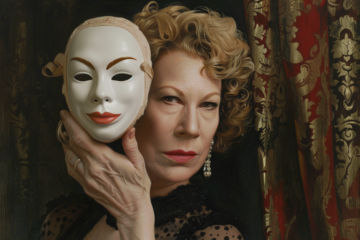


No wonder France surrendered so quickly to Germany in 1940.
not only France surrender but after the failer of the blum governement and the roberry of the same of a quarter of spanish gold ,the rest went tostalin moscau ;with the help of a guy neatly called it s french ALbert Rosenberg .the three country who finance and help the bolchevic insurrection in spain were 1: rusia 2: France 3: tchekoslovaqia but the person who took charge of the ruling the general petain was later sentence by the jews international and the french judiciar order ;All done in a symphtic manner such as to enhance the great role of the jews in the process /conclusion he was sentence to life / not a goyim helped him out ….” deshonneur ” they call this when it sonly bolchevic and English propaganda… Read more »